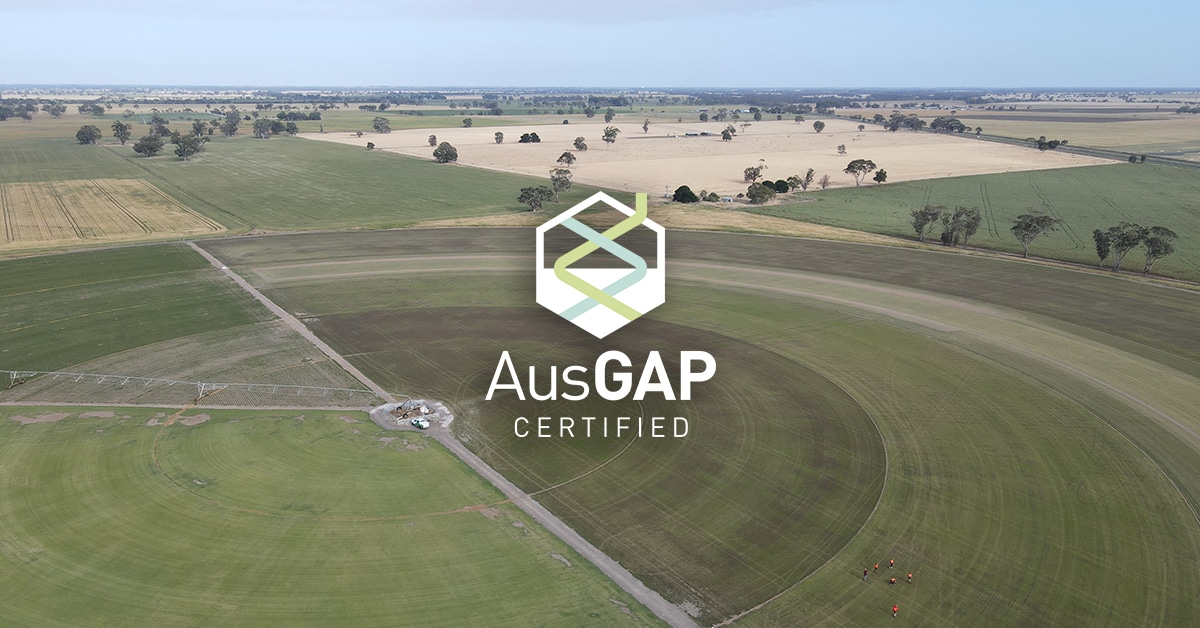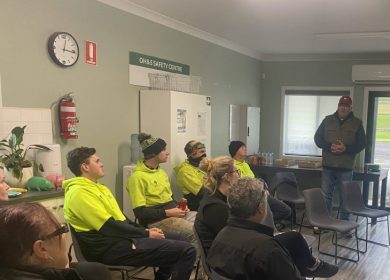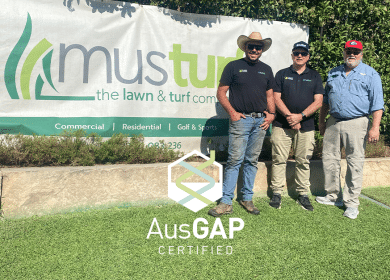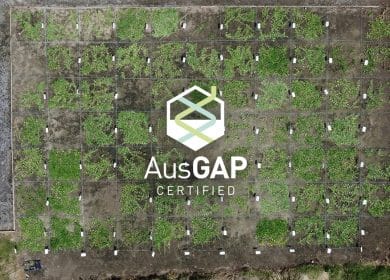Quality control on a turf farm

Quality control practices on a turf farm play an integral role in ensuring that the grasses produced meet AusGAP and consumer standards. Without quality control practices such as biosecurity measures, integrated pest and weed management plans, and AusGAP protocols, turfgrass quality and genetic purity would not be where it is today. Read this week’s blog to find out more about the quality control measures turf farms take and how they affect the end user.
AusGAP standards on quality control
AusGAP oversee the entire production process of certified turf. We ensure turf is sourced from the right places for new planting stock. There are also policies and procedures that we stipulate that ensure quality control is undertaken on farm:
- Fields must be isolated from any other variety and other perennial grasses by an artificial barrier or strip of bare land no less than 1.5m in width to prevent cross contamination.
- Appropriate measures must be taken when equipment and machinery such as mowing and irrigation equipment crosses between different varieties in order to ensure contamination doesn’t occur.
- Turf must be harvested ‘green as possible’ all year round. In cooler climates, every effort must be made to maintain an acceptable harvest colour.
- Turf is to be visually free of other turf varieties, weeds, disease, and pest damage.
Integrated pest and weed management
Integrated pest and weed management refers to a wholistic approach to pest and weed control. This includes an emphasis on prevention, monitoring, and control methods that incorporate a combination of strategies. These strategies include chemical control, cultural practices, and land management:
- Chemical control refers to the use of herbicides or pesticides in order to control weed or pest populations. When using this method of control, it is recommended to also include in the integrated management plan to use cultural practices as well. This is to discourage pesticide and herbicide resistance.
- Cultural practices refer to practices such as mowing, manual removal of weeds, aerating, etc.
- Land management includes crop rotation, early weed identification, and good weed hygiene.
Good weed hygiene is essential to quality control on a turf farm. This includes cleaning machinery and vehicles between varieties, having biosecurity signage at every farm entrance, removing sources of weed reinfestation around an AusGAP certified turf paddock, and ensuring nonproduction areas are also free from weeds. Having an integrated management plan in place is a major component in ensuring turf quality is up to standard on a turf farm.
Biosecurity and quality control on a turf farm
Farm biosecurity and turf quality control are synonymous. Biosecurity measures must be in place to ensure the long-term sustainability and viability of the turf industry. As dictated by AusGAP for producers of AusGAP certified turf a farm biosecurity policy must be in place that includes measures to reduce weed, disease, insect, or other pathogen contamination potential from the movement of people, vehicles, and equipment. Procedures and facilities must be in place and clearly displayed for the cleaning of machinery and equipment that has the potential to carry contaminates. Additionally, any brought in material such as fertiliser, turf material, or crop inputs, must be clearly recorded for their source and application areas, this allows traceability should contamination occur. It is these biosecurity measures and more that ensure that turf quality is up to AusGAP’s stringent set of standards.
Quality control on turf farms is integral to their success, as well as integral to the success of the end users turf project. By implementing rigorous quality control measures throughout the production process, turf farms producing AusGAP certified turf uphold the highest standards in the industry. Having these quality control practices in place and having AusGAP standards to supplement is changing the turfgrass industry and the standards that are acceptable, ensuring only the best quality turf reaches the end user.


